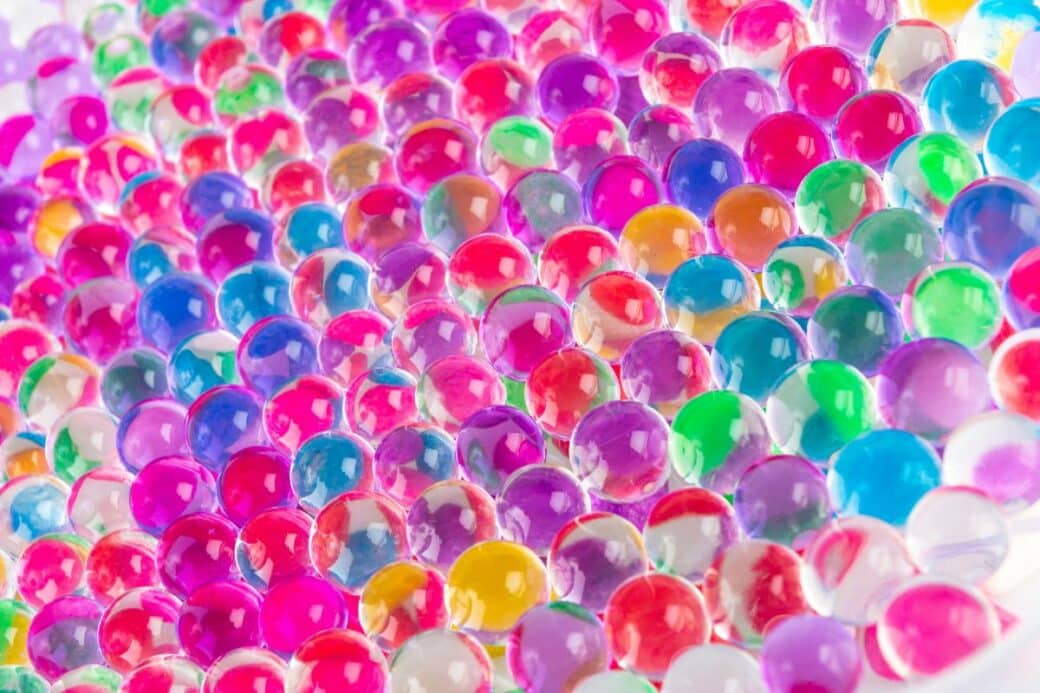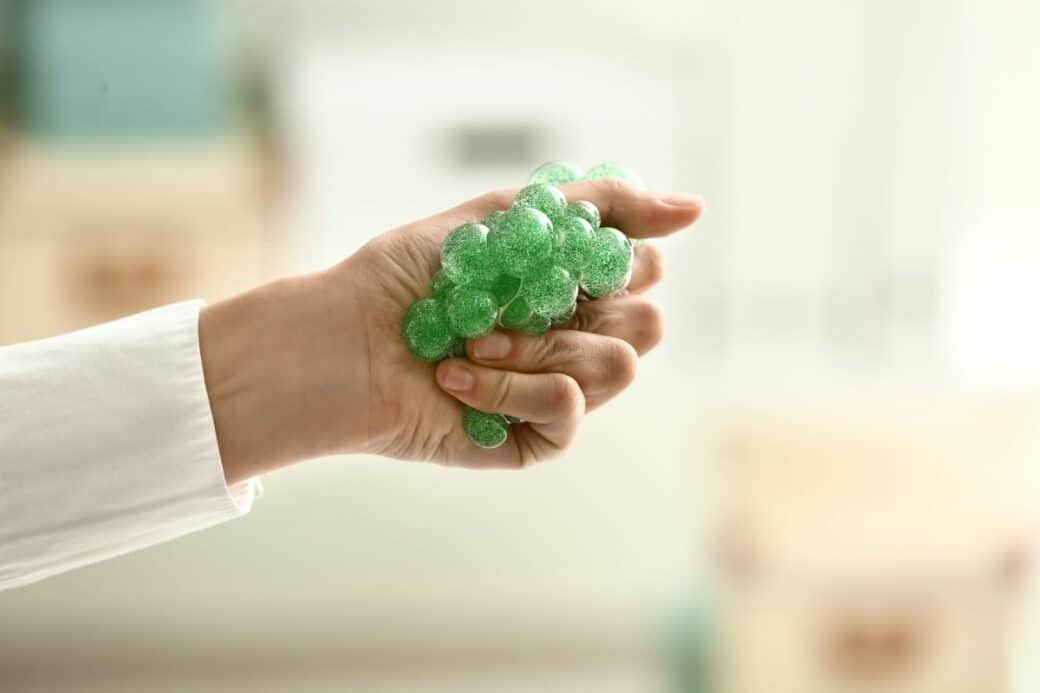Are you curious about the secret inside those squishy stress balls? Well, get ready to have your mind blown because today we are going to reveal the mystery: what are stress balls filled with? These small, rubbery wonders have been providing comfort and relief for years, but have you ever wondered what’s actually inside? Get ready to discover the surprisingly simple answer that will leave you wanting to squeeze your stress away even more.
What Are Stress Balls Filled With: Origin and Brief History of Stress Balls
Origin of Stress Balls
Stress balls have a fascinating origin story that dates back centuries. The concept of using objects to relieve stress and promote relaxation can be traced back to ancient China. In ancient times, Chinese medicine practitioners used small, soft balls made from dried herbs to massage the hands and stimulate acupressure points. These balls were believed to enhance circulation and reduce tension in the body.
Development through the Ages
As time went on, the use of stress balls spread to other cultures, each putting their unique spin on the concept. During the Middle Ages in Europe, people started using tightly woven fabric pouches filled with fragrant herbs or aromatic oils. These scented balls were popular for their relaxation-inducing properties and were commonly used during meditation and prayer.
In the 20th century, stress balls took on a new form with the invention of rubber. The first commercially available stress balls were made from rubber and filled with a gel-like substance. These early versions were primarily used for hand strengthening exercises, rather than stress relief.
Modern-Day Use of Stress Balls
Today, stress balls have become a ubiquitous tool for stress management. They are widely used in various settings, including offices, schools, and even therapy sessions. Their compact size and ease of use make them a convenient option for individuals seeking quick stress relief. Moreover, stress balls have also found their way into the world of physical therapy, where they are utilized for hand and finger rehabilitation exercises. With their affordable price and effectiveness, stress balls continue to be a go-to choice for people looking to alleviate stress and tension.
Understanding Stress Balls
Definition and Purpose of Stress Balls
Stress balls are small, handheld objects that are typically spherical or oblong in shape. They are designed to be squeezed, manipulated, and rolled within the hand or between the fingers. Stress balls work on the principle of providing sensory stimulation, engaging the muscles in the hand and forearm, and promoting relaxation. Their main purpose is to relieve stress and anxiety, improve focus and concentration, and provide a healthy outlet for emotional tension.
Different types of Stress Balls
Stress balls come in a variety of shapes, sizes, and materials. The most common types include foam stress balls, gel-filled stress balls, and squishy stress balls. Foam stress balls are lightweight and offer a soft and spongy texture. Gel-filled stress balls, on the other hand, provide a unique and slightly firmer resistance when squeezed. Squishy stress balls are filled with a semi-liquid gel and offer a satisfying squishy sensation when manipulated.
General Design and Feel of Stress Balls
The design of stress balls is carefully crafted to provide maximum comfort and effectiveness. Most stress balls feature a textured or patterned outer layer, which enhances grip and prevents them from slipping out of your hand. The size of stress balls can vary, but they are typically small enough to fit comfortably in the palm of your hand. The outer covering of stress balls is made from a soft, flexible material that allows for easy squeezing and manipulation.

Inside of a Stress Ball
Typical Structure of a Stress Ball
The construction of a stress ball consists of multiple layers, each serving a specific purpose. The innermost layer is the filling, which can vary based on the type of stress ball. Surrounding the filling is a protective layer, typically made of a flexible rubber or latex material. This outer layer helps contain the filling and gives the stress ball its distinctive texture and feel.
Materials Used in the Outer Layer
The outer layer of stress balls is often made from materials such as rubber, latex, or a combination of both. These materials offer the right amount of elasticity, allowing the stress ball to be squeezed and manipulated without losing its shape. The outer layer is also designed to be resistant to wear and tear, ensuring the longevity of the stress ball.
Importance of the Ball’s Malleability
The malleability of stress balls is key to their effectiveness. The ability to squeeze and manipulate the stress ball provides a satisfying physical release of tension and helps distract the mind from stressful thoughts. The malleable nature of stress balls also allows for various hand and finger exercises, which can strengthen muscles and improve dexterity.
Commonly Used Fillings in Stress Balls
Use of Gels and Foams
Gels and foams are widely used as fillings in stress balls. Gel-filled stress balls provide a unique sensory experience, as the gel moves and shifts when squeezed. This movement creates a tactile and visual stimulation that can be soothing and calming. Foam-filled stress balls, on the other hand, offer a soft and spongy texture, allowing for gentle squeezing and manipulation.

Use of Beans or Rice
Some stress balls are filled with beans or rice. These fillings give the stress ball a more substantial and weighty feel, providing a different sensory experience compared to gel or foam-filled stress balls. The gentle shifting and movement of beans or rice inside the stress ball can create a subtle massage-like sensation when squeezed.
Use of Microbeads
Microbeads, tiny plastic particles, are another common filling used in stress balls. Microbead-filled stress balls offer a unique tactile experience. The small, round beads move freely within the stress ball, creating a sensation similar to that of sand. This texture can be especially satisfying for individuals who enjoy subtle, continuous tactile feedback.
Impact of Different Fillings on Functionality
How Different Fillings Affect the Texture
The choice of filling greatly influences the texture and feel of a stress ball. Gel-filled stress balls have a smooth, slightly firm texture that provides resistance when squeezed. Foam-filled stress balls, on the other hand, offer a softer texture, with a compressible and spongy feel. Beans or rice-filled stress balls provide a more substantial texture, with a slight massaging sensation from the movement of the fillings. Microbead-filled stress balls offer a unique, sand-like texture that can be both stimulating and calming.
Role of Fillings in Stress Relief
Regardless of the filling, stress balls serve as effective stress relief tools. The act of squeezing and manipulating the stress balls helps release tension and promotes relaxation. The tactile feedback provided by different fillings enhances the sensory experience, further contributing to stress reduction. The choice of filling depends on personal preference and the desired sensory input.
Durability of Different Fillings
The durability of stress balls can vary depending on the filling used. Gel-filled stress balls, while providing a satisfying texture, may be prone to rupturing or leaking if subjected to excessive force or sharp objects. Foam-filled stress balls are generally more durable and can withstand repeated squeezing and manipulation. Beans or rice-filled stress balls also have good durability, as the fillings are less likely to degrade over time. Microbead-filled stress balls can be durable if made with high-quality materials, but they may be more susceptible to wear and tear compared to other types of stress balls.
How the Fillings Are Inserted
Manufacturing Process of Stress Balls
The manufacturing process of stress balls involves several stages. First, the outer layer material is shaped and cut into the desired shape, whether spherical, oval, or any other design. Next, the inner filling is inserted into the outer layer. This can be done manually or through automated processes, depending on the production scale. Finally, the stress balls go through a sealing and finishing process to ensure the filling remains secure inside the outer layer.
Safety Precautions during the Filling Process
During the filling process, safety precautions are taken to ensure the integrity and safety of the stress balls. Manufacturers ensure that the filling materials used are non-toxic and do not pose any health risks. Additionally, the stress balls are inspected for any defects or leaks before they are packaged and distributed.
Sealing and Finishing of the Stress Ball
The sealing and finishing of stress balls are crucial to prevent any leakage or damage to the filling. Depending on the design, stress balls may be sealed using heat-sealing techniques, adhesive bonding, or a combination of both. The goal is to create a secure barrier that keeps the filling contained within the outer layer, ensuring the stress ball remains intact and functional.
Hygiene and Maintenance of Stress Balls
How to Clean Stress Balls
Regular cleaning of stress balls is important to maintain hygiene and prevent the buildup of dirt and bacteria. Foam-filled stress balls can be cleaned by gently wiping them with a damp cloth and mild soap. Gel-filled stress balls can be wiped clean in the same manner, taking care not to submerge them in water. Microbead and bean-filled stress balls can be spot cleaned with a damp cloth. It is important to check the manufacturer’s instructions for specific cleaning recommendations, as some stress balls may have unique care requirements.
Replacing Fillings in Stress Balls
Over time, the fillings in stress balls may become compressed or lose their effectiveness. Some stress balls may offer the option to replace the fillings, either through a DIY process or by purchasing replacement fillings from the manufacturer. However, it is essential to follow the manufacturer’s guidelines when replacing the fillings to maintain the structural integrity and safety of the stress ball.
Disposal of Old or Worn-Out Stress Balls
When stress balls reach the end of their lifespan or become worn-out, it is important to dispose of them properly. Depending on the materials used, stress balls may be recyclable or need to be discarded as general waste. It is advisable to check local recycling guidelines or contact the manufacturer for information on how to responsibly dispose of old or worn-out stress balls.
Stress Balls Vs. Other Stress Relief Tools
Comparison with Fidget Spinners
Fidget spinners gained popularity as stress relief tools, especially among individuals with ADHD or anxiety. While fidget spinners provide a mindless, repetitive motion for relaxation, stress balls offer a more interactive and versatile approach to stress relief. Squeezing and manipulating stress balls engage the muscles in the hand, promoting blood circulation and releasing tension. The tactile feedback from stress balls can also be more engaging and satisfying compared to the spinning motion of fidget spinners.
Comparison with Yoga and Exercise
Yoga and exercise are well-known methods for stress management and overall well-being. While stress balls are not a replacement for regular physical activity or mindful practices like yoga, they can complement these activities by providing a portable and accessible tool for stress relief. Stress balls can be used during breaks at work, while commuting, or in any situation where a quick and discreet stress relief option is desired.
Efficacy of Stress Balls in Stress Management
Stress balls have been proven to be effective in stress management and relaxation. The physical act of squeezing and manipulating stress balls triggers a relaxation response in the body, reducing the levels of stress hormones. By redirecting focus and engaging the muscles, stress balls help individuals regain control over their emotions and promote a sense of calm. While the efficacy may vary from person to person, stress balls have gained a strong reputation as a practical and accessible tool for stress relief.
Benefits and Drawbacks of Using Stress Balls
Health and Wellness Benefits
Using stress balls as part of a broader stress management plan can have numerous benefits for health and wellness. Regular use of stress balls can improve hand and finger strength, enhance coordination, and increase dexterity. The repetitive squeezing and manipulating motions can also help relieve muscle tension and reduce the risk of developing repetitive strain injuries. Additionally, stress balls offer a portable and discreet way to manage stress, allowing individuals to incorporate stress relief techniques into their daily routines.
Potential Drawbacks or Risks
While stress balls are generally safe and beneficial, there are a few potential drawbacks or risks to be aware of. Individuals with certain hand or joint conditions, such as arthritis or carpal tunnel syndrome, should consult with a healthcare professional before using stress balls. Overzealous squeezing or using stress balls with excessive force may lead to muscle strains or injury. Additionally, it is important to choose stress balls made from non-toxic materials, especially for individuals who have a tendency to put objects in their mouths, such as children or individuals with certain disabilities.
Common Misconceptions about Stress Balls
There are a few common misconceptions surrounding stress balls that are important to address. One misconception is that stress balls are solely for stress relief. While stress relief is a primary purpose, stress balls can also be used for hand strengthening exercises, improving grip strength, and increasing finger mobility. Another misconception is that stress balls are only suitable for adults. In reality, stress balls can be used by people of all ages, provided they are appropriate for the individual’s developmental stage and physical capabilities.
Future of Stress Balls
Upcoming Innovations in Stress Ball Design
As stress management continues to be a prevalent topic in today’s fast-paced world, the future of stress balls holds exciting possibilities. Innovations in stress ball design may include advanced materials that offer enhanced sensory experiences and increased durability. Manufacturers are also exploring ergonomic designs tailored to specific hand sizes and shapes, providing optimal comfort and effectiveness. Additionally, interactive features such as Bluetooth connectivity and built-in sensors may be integrated into stress ball designs, allowing for personalized stress management experiences.
New Materials and Fillings
Advancements in material science may lead to the development of new stress ball materials and fillings. Researchers and manufacturers are exploring sustainable options that are non-toxic, biodegradable, and eco-friendly. New fillings with unique textures and properties may also be introduced, further diversifying the sensory experience of stress balls.
Role of Stress Balls in the Era of Digital Stress Management
In an increasingly digital world, stress balls are poised to play a significant role in digital stress management strategies. With the rise of mobile applications and virtual reality, stress balls can be integrated into digital interfaces to provide tangible and tactile feedback. This combination of digital and physical stress relief tools offers a holistic approach to stress management, addressing the impact of technology on our well-being.
In conclusion, stress balls have come a long way from ancient Chinese medicine practices to become a popular tool for stress relief in modern times. Their versatile design, range of fillings, and tactile feedback make them an effective and accessible option for managing stress. With ongoing innovations and advancements, stress balls are sure to remain a valuable tool in the pursuit of mental and physical well-being. So go ahead, grab a stress ball, give it a squeeze, and let the soothing sensation wash away your stress.




